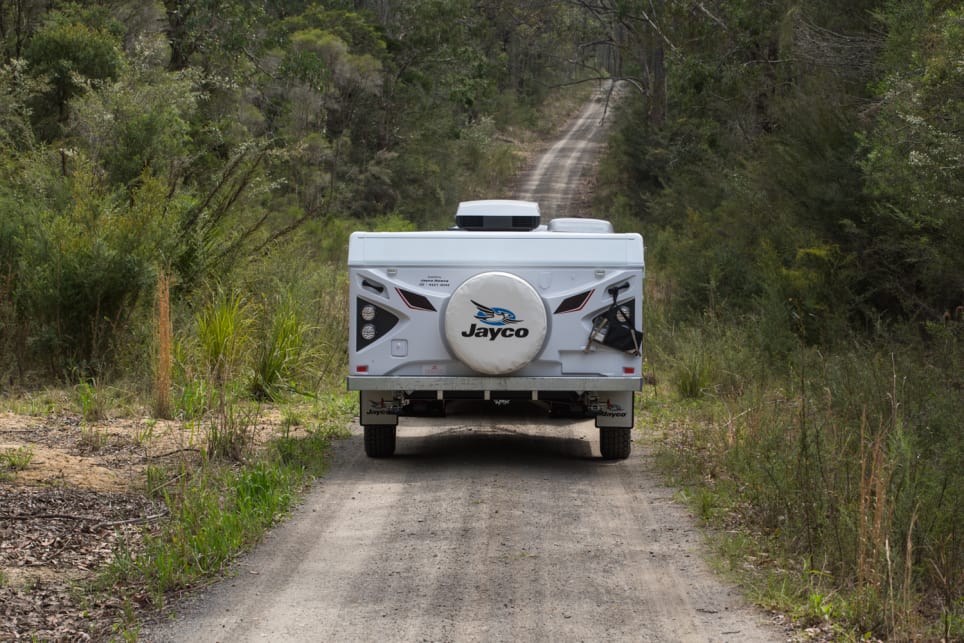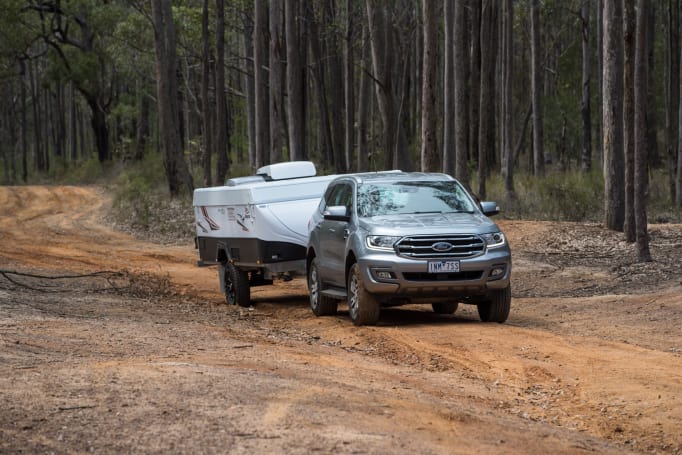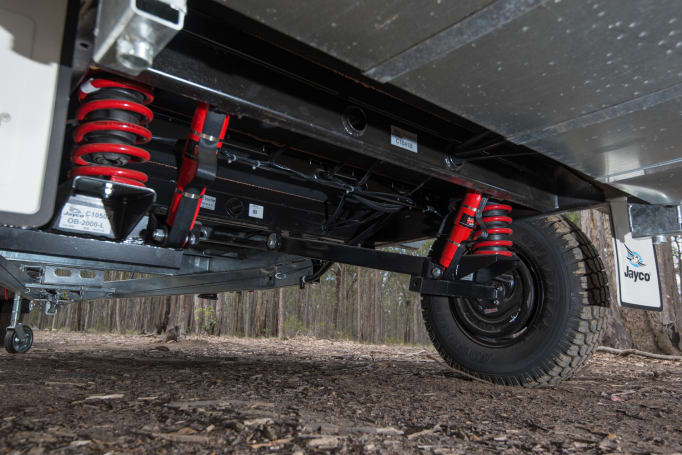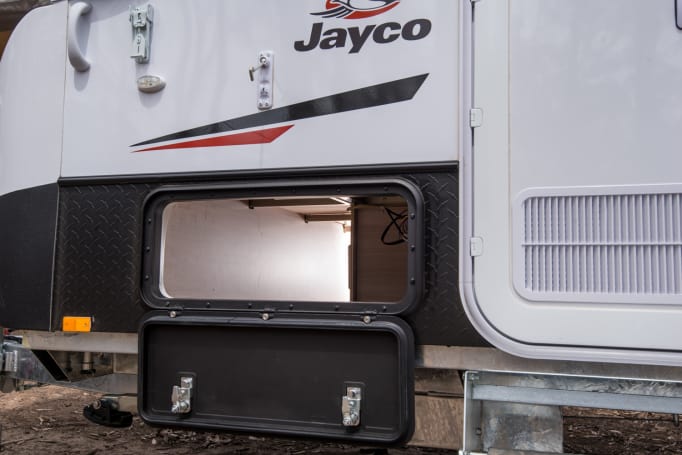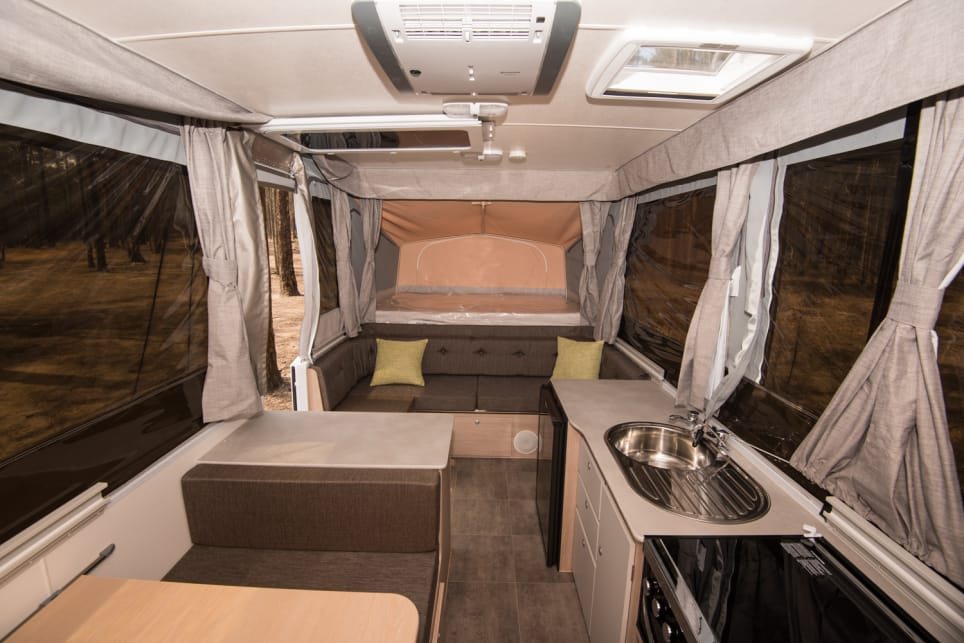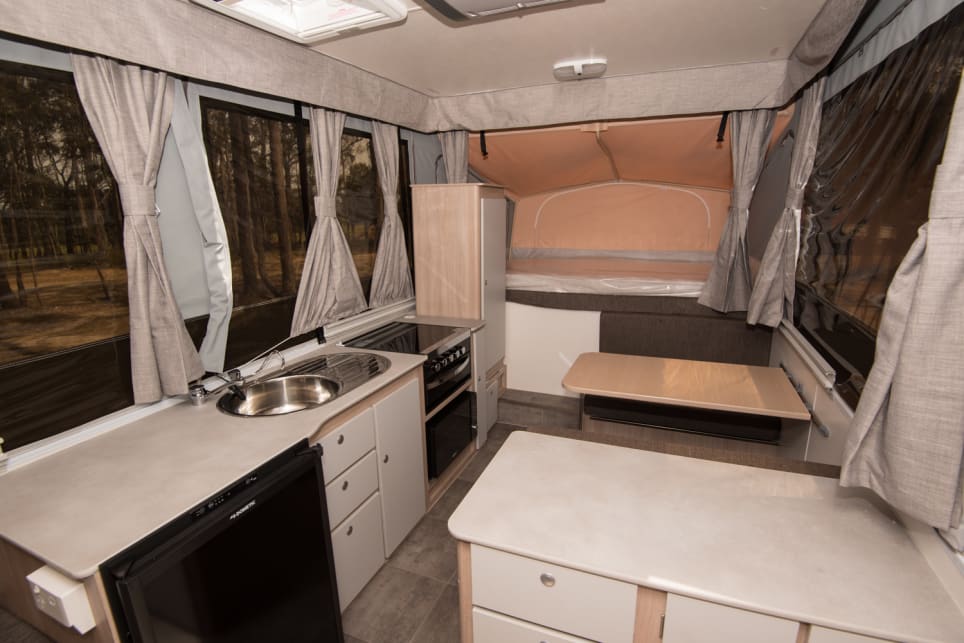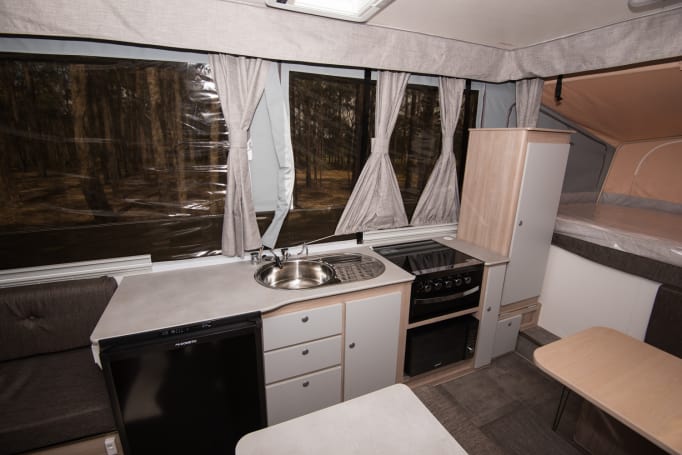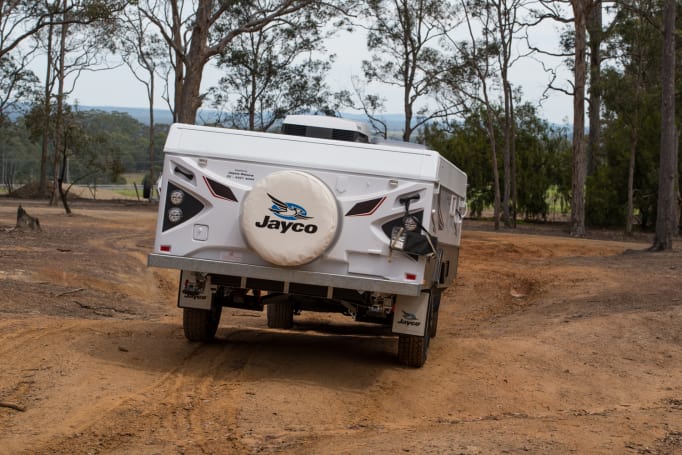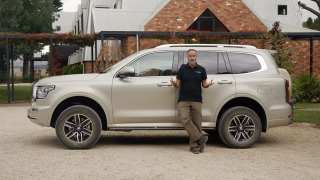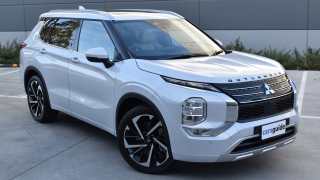
| Length | 5365mm |
| Width | 2240mm |
| Height | 1910mm |
| Weight (Tare/ATM/Tow ball) | 1385kg / 1685kg / 130kg |
Features and options offered don't change a whole lot between camper-trailers – after all there's only so much manufacturers can pack into a unit without pushing the boundaries of physics and the law – but specifications, dimensions and weights may vary.
The Swan Outback – at a travel length of 5365mm – is the longest of Jayco's camper-trailer range tested so far; the equal second-longest Outbacks – the Hawk and Eagle Outback – are 5060mm long but have a heavier tow ball weight (145kg and 150kg respectively) than the Swan's 130kg.
Travel height (1910mm) and width (2240mm) remain the same.
The Swan Outback does, however, have a higher tare weight at 1385kg, than the Hawk Outback (1285kg) and Eagle Outback (1270kg).
Jayco reckons that the Swan Outback "easily sleeps four adults and two children, with an option to sleep two more children on a convertible bed". I'll be the judge of that.


